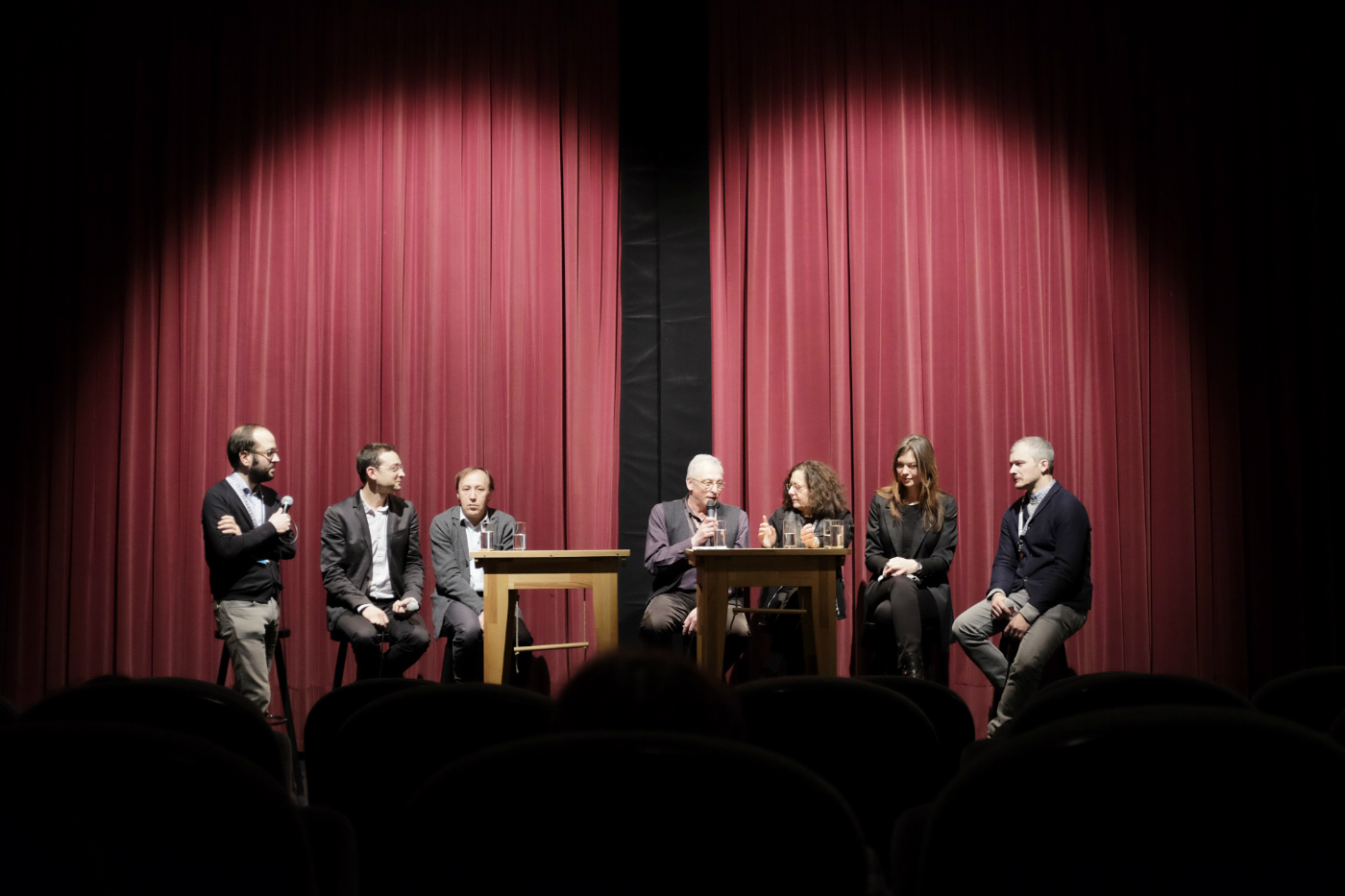Blog #6/16: The Sounds of Silence
by Moritz Pfeifer, East European Film Bulletin
The fifth day of the Critic’s Week screened two films under the broad theme of silencing, the heavily nostalgic Blue Dress by Paris-based Ukrainian director Igor Minaev and the shorter and more symbolically meditative Vapour by Thai star Apichatpong Weerasethakul.
Blue Dress is a melodramatic mise-en-abyme film in which silence is first and foremost understood as a metaphor for the vanishing of certain films from the history of cinema. A woman in a blue dress (Gabrielle Lazure) dies and leaves her adult son (Kevin Boise) with a bunch of old film reels and a diary he had no idea existed. The reticent mother had only spoken about her origins in reference to “the place”, but the secret archives reveal her past as an actress and muse of a censored Ukrainian director. The artistic films, which are shown throughout the film, are Minaev’s own short films that were created under oppressive artistic control in the 1970s and 1980s while he was still living in Ukraine.

Minaev cleverly reuses the short films to tell the story of a love triangle in which the woman in the blue dress plays a tragic role. The love story is narrated in a voice-over by her son, who tries to make sense of the found footage and thus turns into a director of his own. His heroic achievement is not so much the discovery of his mother’s true personality as the resuscitation of (Minaev’s) films from oblivion. This last point seemed to have been the major preoccupation of Minaev. “We make movies to show them. If they’re not shown, years of work vanish”, he said during a discussion after the screening.
One could, of course, ask whether the young man’s ability to give life to art considered dead is a form of wishful thinking from an aging director worried about his own posterity. That may be why the world of the son, for all his talents as an archivist, looks lonely, gray, and melancholy whereas the world in the found footage is populated, colorful, and cheerful. In the end, Minaev’s nostalgia for his own productive period seems to undermine his grief over the political silencing of art. It is one thing to blame political circumstances for not being able to make art, but quite another to use it as an excuse for creative mediocrity. That Minaev fails to address these issues in a film that is otherwise almost overly self-reflexive, may just be another form of self-silencing.

It is hard to place Apichatpong Weerasethakul’s work within this debate as there are probably only very few directors working today who appear as free in their creative choices. Weerasethakul shot Vapour in Toongha, where he lived for eight years. Clouds fall over the village drowning it for a day in fog. The film is black and white and with no sound. When the vapor vanishes, colored pictures of graves appear.
As film scholar Gertrud Koch poignantly remarked after the screening: “The vapor is a symbolic killing force that doesn’t need sound.” Its very silence can even be seen as a visual explanation for the unpredictability of authoritarian violence in the village’s struggle to maintain the property rights over its territories.
Weerasethakul accomplishes the goal Minaev is aiming at: he gives a voice to those who are silenced and stands out as a truly imaginative voice among his contemporaries.

